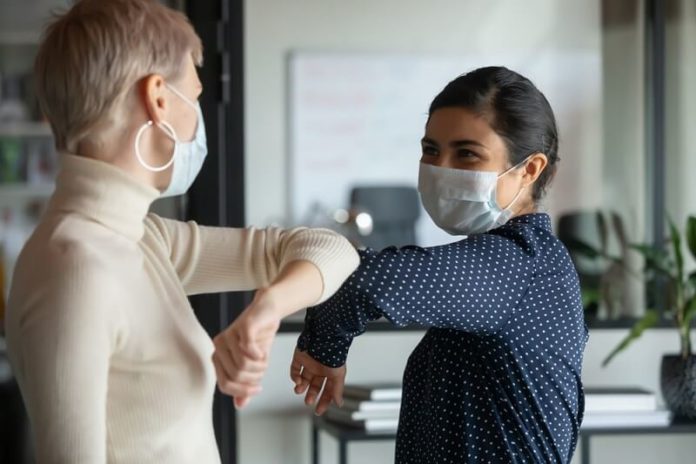Despite the pandemic and a forced shut down, some companies did not have a choice about remote working. Employees of essential businesses either remained on-site through the pandemic or have already returned. Others are reevaluating the importance of the workplace, and many organizations will decide to transition to either a full-time remote workforce or a hybrid approach to working.
While much is up-in-the-air, one thing is certain we will see more returns to the workplace and an increase in demand for new tools to help future-proof the workplace. But a successful reopening of the economy and workplaces requires a commitment from companies that they are taking the health and safety of their teams seriously.
According to a survey we commissioned and The Harris Poll conducted, most employed Americans (71%) working from home because of the pandemic said they were eager to return to the workplace if it can be done safely.
At the end of last year, less than half (44%) of employed Americans were going into the workplace each day. In fact, a mere 17% had returned to the workplace on a staggered schedule.
While a COVID-19 vaccine is a welcome development, it alone may not be enough to bring about a widescale return to the workplace.
More than half (52%) of employed Americans said the vaccine would significantly impact their confidence to return and their comfort level in the workplace. However, more than a quarter (26%) said the vaccine would have no effect, requiring further action.
There is a benefit in returning, but the risk is real
After about a year in lockdown, Americans are ready for a return. They miss the workplace and personal interactions with colleagues, and, frankly, they are more productive when in the workplace.
Nearly three-quarters (72%) of employed Americans feel more engaged when in the office, and eight in 10 (80%) of Americans working from home due to the pandemic miss in-person collaboration with colleagues.
Similarly, seven in 10 (70%) feel more productive in the office, while 57% of employed Americans said they are tired of video conferences (the ballyhooed “Zoom Fatigue”).
Companies may only have one chance to perfect their reopening approach. More than half of employed Americans working from home due to the pandemic (54%) would consider leaving their job should their employer require them to return to the workplace before they felt comfortable.
Why take a risk with a reopening plan?
Make technology an ally
Safely returning to the workplace is uncertain for too many small-to-medium-sized businesses. Regardless of their size, the common thread among employees is they will not be ready to return until there are transparent safety measures.
While deploying hand sanitizer, mandating masks and implementing social distancing are admirable steps, they are merely table stakes.
Companies must embrace technology to help them prepare for the new dynamic workplace. When they do, they will find happier and more engaged employees who feel safe and comfortable in the workplace.
Technology can serve as a force multiplier of other non-digital approaches when deployed correctly and help small-to-medium-sized businesses navigate a shifting landscape.
The top three solutions workers identified that would help facilitate a safe return to the office are limited or reduced capacity (40%); a requirement that employees pass an online health screening before entering the workplace (36%); and the elimination of in-person meetings (32%).
To accomplish a safe reopening, our customers have shown particular interest in implementing bookable desks that can be configured — such as who can book and when — to meet their needs. Our survey also revealed automated room booking and visual directories as technologies that would help employees feel safe when returning to the workplace.
Prepare for the future
If there is a blessing in disguise with this pandemic, it’s the opportunity organizations have to develop their new dynamic workplace. By taking action today, businesses have an opportunity to future proof against the inevitable challenges of tomorrow.
The emerging workplace is dynamic, but the deployment of technology does not have to necessitate an extensive capital investment. Instead, it requires the smart management of the potential pitfalls of moving too quickly.
Workers want a safe return to the office, but companies will not have multiple opportunities to get it right. Are companies equipped to provide the return their workers want?
David Cocchiara is Chief Executive Officer of OfficeSpace Software, the creator of better workplaces helping companies navigate workplace disruptions and manage workspace dynamics. He was previously the Chief Operating Officer and Chief Financial Officer of Lancope, a network security software company, where he built the finance and operational functions and a customer-first culture. After Cisco acquired Lancope in 2015, Cocchiara continued to drive programs focused on customer success and customer insights within Cisco’s Security Business Group, leading several teams and driving change across the company.
Workplace safety stock photo by fizkes/Shutterstock







